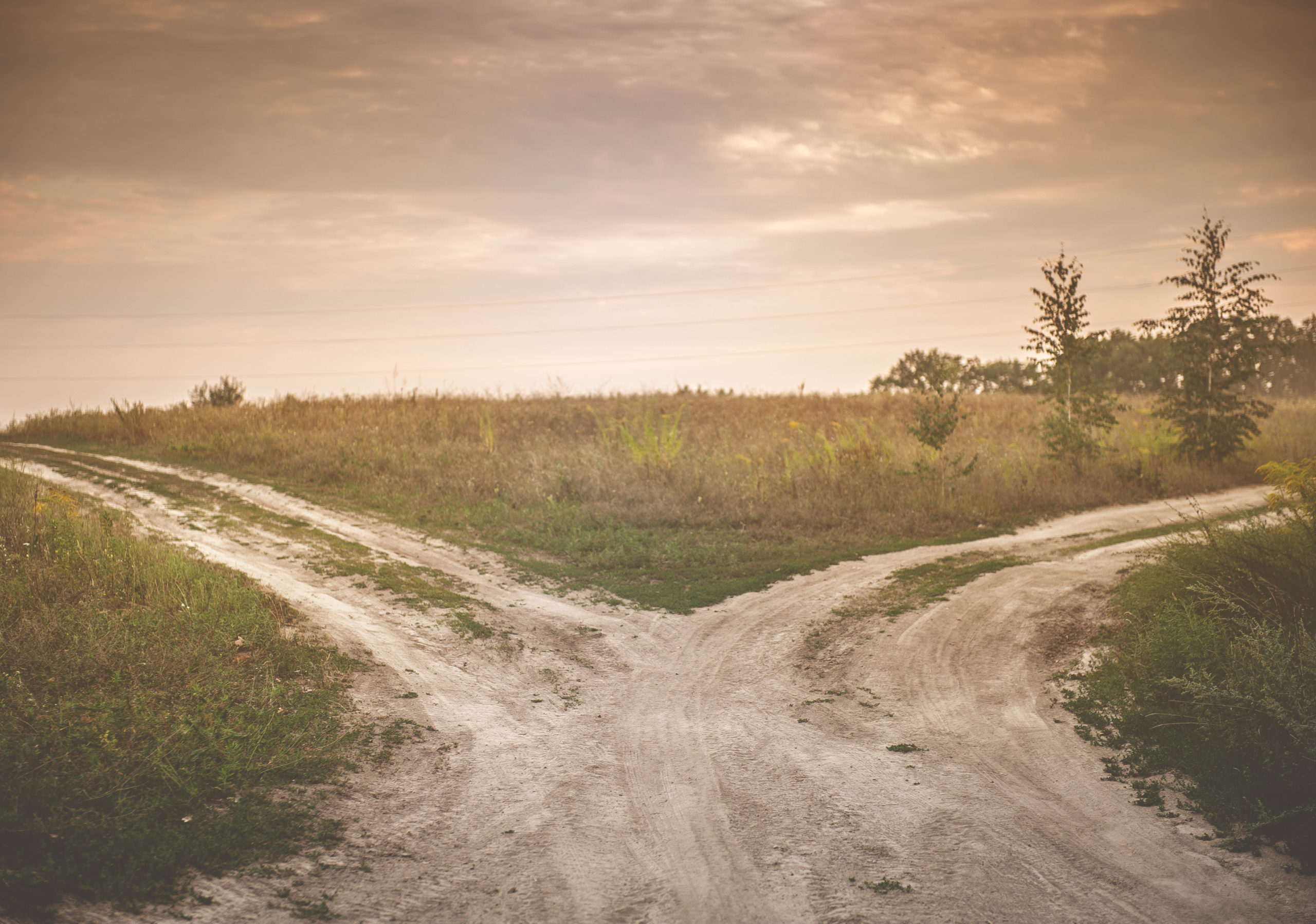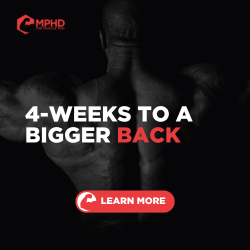Introduction
We know muscles grow through a process called, “hypertrophy.” But there’s also this fancy sounding process called, “hyperplasia,” that is surrounded by a tornado of controversy. This is one of the topics we get a ton of questions on so it’s worth taking the time to devote a full article to it and clear up any remaining confusion.
The first thing to understand is the difference between hypertrophy and hyperplasia, and the idea of skeletal muscle hyperplasia vs. other types of hyperplasia in the body. Hypertrophy is simply the increase in diameter of a muscle fiber – this can be achieved through increasing the size of the contractile proteins or increasing the fluid and enzyme content of the muscle cell (4,15). On the other hand, hyperplasia is the increase in the number of muscle fibers (4,15). Increasing the number of muscle fibers will increase the total cross sectional area of a muscle similarly to increasing the size of individual fibers. On the outside, hypertrophy and hyperplasia would look very similar from an aesthetics standpoint.
Hyperplasia can also occur in other tissues of the body. This is where hyperplasia can get somewhat of a bad rep as uncontrolled cellular proliferation is often associated with tumor growth (11). Skeletal muscle hyperplasia has no association with tumors, so keep that in mind if you do any further research on the topic and come across alarming findings related to tumor growth.
Is Muscle Hyperplasia a Myth?
In short, no; skeletal muscle hyperplasia is not a myth. Some believe that it does not occur in humans since we don’t really have solid evidence of it occurring during a controlled resistance training protocol. Human evidence is certainly lacking, but we have myriad evidence of hyperplasia occurring in birds (2,3), mice (20), cats (10), and even fish (13).
 The processes through which these cases of hyperplasia occurred also greatly differ which makes hyperplasia even more of an interesting subject. Many bird studies that exhibited hyperplasia involved hanging weights from the wings of birds for ridiculously long times (2,3). This doesn’t really represent a normal human training protocol, but conversely, cats performing their own sort of kitty resistance training also exhibited hyperplasia (10). No, the cats were not bench pressing or squatting, but their protocol involved similar muscle activation sequences to what a normal human training session would look like. The mice we mentioned earlier experienced hyperplasia after scientists were able to reduce their levels of myostatin (20), which is a protein associated with limiting muscle growth. And the fish we referred to simply underwent hyperplasia while growing during adolescence (13).
The processes through which these cases of hyperplasia occurred also greatly differ which makes hyperplasia even more of an interesting subject. Many bird studies that exhibited hyperplasia involved hanging weights from the wings of birds for ridiculously long times (2,3). This doesn’t really represent a normal human training protocol, but conversely, cats performing their own sort of kitty resistance training also exhibited hyperplasia (10). No, the cats were not bench pressing or squatting, but their protocol involved similar muscle activation sequences to what a normal human training session would look like. The mice we mentioned earlier experienced hyperplasia after scientists were able to reduce their levels of myostatin (20), which is a protein associated with limiting muscle growth. And the fish we referred to simply underwent hyperplasia while growing during adolescence (13).
It’s clear that hyperplasia can occur through many different methods, but still the question remains: does it occur in humans? Let’s discuss.
Evidence of Hyperplasia in Humans
It goes without saying here, that the evidence for hyperplasia in humans is certainly lacking. We’ll get into why that is here in a second, but for now, let’s go over what we have seen throughout the past few decades.
Multiple studies have compared high level bodybuilders to sedentary or recreationally active individuals to determine if hyperplasia plays a role in extreme muscle growth. And we do see evidence that these bodybuilders contain significantly more muscle fibers than their sedentary counterparts (8,16,18). The problem we have with this examination is that we cannot say for certain whether or not the bodybuilding training stimulus was the primary reason for the increased number of muscle fibers. It certainly stands to reason that a high level bodybuilder would have a genetic propensity for building muscle, and one of these genetic “cheat codes” could simply be a higher baseline level of muscle fibers (15).
 We do see one study in which a “training” stimulus may have accounted for an increase in fiber numbers. This particular study examined the left and right tibialis anterior (front of the shin) muscle in young men. It was found that the non-dominant side tibialis anterior consistently exhibited a greater cross-sectional area than the dominant side, but single muscle fiber size between the two muscles was similar. Therefore, the best explanation for this difference in overall size would have been through increased fiber number. The authors propose that the non-dominant tibialis anterior received a higher daily workload than the dominant side for a few different reasons, but this is one scenario in which a “stimulus” could have invoked an increase in muscle fiber number (21).
We do see one study in which a “training” stimulus may have accounted for an increase in fiber numbers. This particular study examined the left and right tibialis anterior (front of the shin) muscle in young men. It was found that the non-dominant side tibialis anterior consistently exhibited a greater cross-sectional area than the dominant side, but single muscle fiber size between the two muscles was similar. Therefore, the best explanation for this difference in overall size would have been through increased fiber number. The authors propose that the non-dominant tibialis anterior received a higher daily workload than the dominant side for a few different reasons, but this is one scenario in which a “stimulus” could have invoked an increase in muscle fiber number (21).
So we do have a little evidence for hyperplasia occurring in humans. Whether hyperplasia is simply a natural “gift” for the elite or not awaits discovery, but for now, let’s discuss why hyperplasia might occur.
How Does Hyperplasia Occur?
Before understanding how hyperplasia might occur, it’s worth discussing how we can measure it. I’m sure you’re imagining some fancy pants computer analyzing a muscle biopsy and spitting out numbers. But no, it’s not that cool. If you scroll through the references, you’ll see that many of these investigations were taking place in the late 1970s through the 1990s. More than likely, a young graduate student had to do the dirty job of literally counting muscle fibers by hand to earn their place in the lab. Fancy computers didn’t help much then, so grad students took the brunt of this responsibility.
So it’s easy to see, then, that simple counting errors can account for small differences in pre- and post-training fiber numbers. This also represents an issue when considering a specific type of muscle hypertrophy called longitudinal hypertrophy. We know from earlier that a muscle fiber can grow by increasing the size of its contractile proteins or intracellular space, but a muscle fiber can also grow length-wise by adding more contractile units in series. These new contractile units can be difficult to differentiate from old and/or possible new muscle fibers which represents a tough scenario when trying to count muscle fibers by hand (22).
So now that that’s out of the way, let’s discuss why hyperplasia might happen. It’s worth a review of the Muscle Memory article (here), but we know that one of the ways a muscle fiber can experience hypertrophy is through satellite cell activation. This process is potentially necessary due to the Nuclear Domain Theory. The Nuclear Domain Theory states that a cell nucleus can only control a limited portion of the cell space (7). Therefore, for a muscle fiber to grow, it would need to add additional nuclei to maintain the nuclear domain of each nucleus. Hard training can signal satellite cells to donate their nuclei to the muscle cell to make this process possible (12).
 Now, what would happen if you can no longer continue adding nuclei to a muscle to allow it to grow? It’s not certain whether satellite cells become downregulated or if there’s a biological limit to the amount of nuclei a muscle cell can contain, but there may ultimately be a scenario in which myonuclear addition can no longer occur to drive growth. What happens if you get to this theoretical growth limit but keep training and stimulating the muscle to grow? The fiber has to split and form two new fibers (9) to restart the hypertrophy process. This theory provoked a somewhat “chicken and the egg” argument amongst researchers – does hypertrophy have to occur before hyperplasia or can they occur simultaneously?
Now, what would happen if you can no longer continue adding nuclei to a muscle to allow it to grow? It’s not certain whether satellite cells become downregulated or if there’s a biological limit to the amount of nuclei a muscle cell can contain, but there may ultimately be a scenario in which myonuclear addition can no longer occur to drive growth. What happens if you get to this theoretical growth limit but keep training and stimulating the muscle to grow? The fiber has to split and form two new fibers (9) to restart the hypertrophy process. This theory provoked a somewhat “chicken and the egg” argument amongst researchers – does hypertrophy have to occur before hyperplasia or can they occur simultaneously?
Several researchers have linked satellite cell activation and muscle hyperplasia due to this theory (1,5,9). It’s worth understanding, however, that the theoretical time course of the above paragraph would take decades of hard training to finally cause fiber splitting. As far as we know, myonuclear addition and muscle hypertrophy doesn’t have a defined limit as to when the muscle has to split to continue supporting the need for growth. I doubt this instance will ever be shown in a study as no study will last that long or induce a hard enough training stimulus to actually cause this to occur.
A few longitudinal studies have examined fiber number as a specific variable following a training protocol, but none have really found a direct increase in muscle fiber number (6,19). These findings provoked one review to claim that the evidence of hyperplasia occurring in humans is, “scarce,” (6) and another to state that, if hyperplasia does occur, it probably only accounts for about 5% of the increase in total muscle size we see in training protocols (15). That last statement certainly seems to ring true as some studies showing an increase in muscle cross sectional area are not always able to explain this difference through increases in single fiber size alone (8,19) – small increases in fiber number can certainly contribute to gains, but probably don’t play a major role and don’t present as statistically different than their baseline levels – especially in studies only lasting a few months.
How to Cause Hyperplasia
Now, we have to discuss the inevitable question that many people will have: how can I induce hyperplasia in my own training? According to the above section, you’re going to have to train for a really long time for hyperplasia to occur. Any type of significant gains will take a long time, so don’t ever discount the importance of training longevity when considering gains.
Now, when considering potential acute training strategies for inducing hyperplasia, it’s easy to see that the greatest increases in muscle fiber number in animal studies was brought about by extreme mechanical overload at long muscle lengths (14). You can infer this for your own training by adding in strategies such as weighted stretching, Intraset stretching, and even stretch-pause reps.
Weighted stretching is a method in which you perform a specific stretch while holding weights. An easy example is a chest stretch – just perform a dumbbell chest flye to the greatest range of motion you can withstand and hold that position for as long as possible.
 Intraset stretching is a similar protocol, however, you’d perform a normal chest flye set, then immediately do some sort of chest stretch for about 30-seconds, and then return back to flyes as soon as possible. Repeat this for about 3-4 sets and you’ll be toast by the end of it.
Intraset stretching is a similar protocol, however, you’d perform a normal chest flye set, then immediately do some sort of chest stretch for about 30-seconds, and then return back to flyes as soon as possible. Repeat this for about 3-4 sets and you’ll be toast by the end of it.
Stretch-pause reps are a play on weighted stretching but you will actually perform reps. With our example of chest flyes, you would perform a chest flye to the greatest range of motion you can achieve, hold it for about 5-seconds, and then return to the top. Try to get a deeper stretch every single repetition and perform these for sets of 4-6 as you want to go as heavy as possible to maximize both the stretch and the mechanical overload.
Now, it’s worth pointing out that the above strategies can’t be used for every single joint. Not every joint can go through a large enough range of motion that causes the muscle to stretch to extreme lengths (17). The shoulder is one of the joints that can, so movements around the shoulder joint are good options for stretch-based training. Lat exercises and chest exercises are the easiest to achieve these strategies, especially if you’re tight in the upper body like many bodybuilders are. The hamstrings can also respond somewhat well to this type of training but I wouldn’t recommend this method for everyone as many people won’t have enough lower back strength or training experience to safely perform this type of training on the hamstrings. If you’re up for it, stretch-pause reps with deficit stiff leg deadlifts are an absolute killer on the hamstrings.
Last but not least, the ankle joint is another joint that can be attacked through these strategies to boost growth in the calves (17). The ankle can achieve quite a bit of dorsiflexion (toes coming up) which can stretch both of the calf muscles to a large degree. Add in weighted stretching and stretch-pause reps to see if this can make a difference in your lagging calves.
Conclusion
In conclusion, it doesn’t appear that hyperplasia plays a major role in overall muscle growth. As stated in an aforementioned review, it might account for about 5% of total size gains (15). Adopting specific training strategies to induce hyperplasia, then, should only account for about 5% of your total training. Stretch-pause reps are an easy way to add these in when training in a busy gym and you’d be fine performing about 4 sets of them per muscle group per week to easily cover that 5% quota. You can probably add in extra sets for the calves if you’re having a hard time getting them to grow.
We still don’t know whether or not hyperplasia is secluded for the genetically elite bodybuilders among us, but adding different training methods to your routine can still be a great way to generate new growth, even if it’s not through hyperplasia. Normal training in the short term more than likely does not cause hyperplasia. You’re going to have to train for a very long time and you’ll have to utilize exercises that provide a huge load at a maximally stretched position for the specific muscle you’re training.
References
- Abernethy, P. J., Jürimäe, J., Logan, P. A., Taylor, A. W., & Thayer, R. E. (1994). Acute and chronic response of skeletal muscle to resistance exercise. Sports Medicine, 17(1), 22-38.
- Antonio, J., & Gonyea, W. J. (1993a). Progressive stretch overload of skeletal muscle results in hypertrophy before hyperplasia. Journal of Applied Physiology, 75(3), 1263-1271.
- Antonio, J., & Gonyea, W. J. (1993b). Role of muscle fiber hypertrophy and hyperplasia in intermittently stretched avian muscle. Journal of Applied Physiology, 74(4), 1893-1898.
- Antonio, J., & Gonyea, W. J. (1993c). Skeletal muscle fiber hyperplasia. Medicine and Science in Sports and Exercise, 25(12), 1333-1345.
- Appell, H. J., Forsberg, S., & Hollmann, W. (1988). Satellite cell activation in human skeletal muscle after training: evidence for muscle fiber neoformation. International Journal of Sports Medicine, 9(04), 297-299.
- Bandy, W. D., Lovelace-Chandler, V., & McKitrick-Bandy, B. (1990). Adaptation of skeletal muscle to resistance training. Journal of Orthopaedic & Sports Physical Therapy, 12(6), 248-255.
- Bazgir, B., Fathi, R., Valojerdi, M. R., Mozdziak, P., & Asgari, A. (2017). Satellite cells contribution to exercise mediated muscle hypertrophy and repair. Cell Journal, 18(4), 473.
- D’antona, G., Lanfranconi, F., Pellegrino, M. A., Brocca, L., Adami, R., Rossi, R., … & Bottinelli, R. (2006). Skeletal muscle hypertrophy and structure and function of skeletal muscle fibres in male body builders. The Journal of Physiology, 570(3), 611-627.
- Gonyea, W. J. (1980). Muscle fiber splitting in trained and untrained animals. Exercise and Sport Sciences Reviews, 8(1), 19-40.
- Gonyea, W., Ericson, G. C., & Bonde‐Petersen, F. (1977). Skeletal muscle fiber splitting induced by weight‐lifting exercise in cats. Acta Physiologica Scandinavica, 99(1), 105-109.
- Goss, R. J. (1966). Hypertrophy versus hyperplasia. Science, 153(3744), 1615-1620.
- Gundersen, K. (2016). Muscle memory and a new cellular model for muscle atrophy and hypertrophy. Journal of Experimental Biology, 219(2), 235-242.
- Higgins, P. J., & Thorpe, J. E. (1990). Hyperplasia and hypertrophy in the growth of skeletal muscle in juvenile Atlantic salmon, Salmo salar L. Journal of Fish Biology, 37(4), 505-519.
- Kelley, G. (1996). Mechanical overload and skeletal muscle fiber hyperplasia: a meta-analysis. Journal of Applied Physiology, 81(4), 1584-1588.
- Kraemer, W. J., Duncan, N. D., & Volek, J. S. (1998). Resistance training and elite athletes: adaptations and program considerations. Journal of Orthopaedic & Sports Physical Therapy, 28(2), 110-119.
- Larsson, L., & Tesch, P. A. (1986). Motor unit fibre density in extremely hypertrophied skeletal muscles in man. European Journal of Applied Physiology and Occupational Physiology, 55(2), 130-136.
- Macdougall, J. D. (2003). Hypertrophy and hyperplasia. In: Strength and power in sport, 252. Wiley-Blackwell. Hoboken, NJ.
- MacDougall, J. D., Sale, D. G., Alway, S. E., & Sutton, J. R. (1984). Muscle fiber number in biceps brachii in bodybuilders and control subjects. Journal of Applied Physiology, 57(5), 1399-1403.
- McCall, G. E., Byrnes, W. C., Dickinson, A., Pattany, P. M., & Fleck, S. J. (1996). Muscle fiber hypertrophy, hyperplasia, and capillary density in college men after resistance training. Journal of Applied Physiology, 81(5), 2004-2012.
- Nishi, M., Yasue, A., Nishimatu, S., Nohno, T., Yamaoka, T., Itakura, M., … & Noji, S. (2002). A missense mutant myostatin causes hyperplasia without hypertrophy in the mouse muscle. Biochemical and Biophysical Research Communications, 293(1), 247-251.
- Sjöström, M., Lexell, J., Eriksson, A., & Taylor, C. C. (1991). Evidence of fibre hyperplasia in human skeletal muscles from healthy young men? European Journal of Applied Physiology and Occupational Physiology, 62(5), 301-304.
- Taylor, N. A., & Wilkinson, J. G. (1986). Exercise-Induced Skeletal Muscle Growth Hypertrophy or Hyperplasia? Sports Medicine, 3(3), 190-200.
From being a mediocre athlete, to professional powerlifter and strength coach, and now to researcher and writer, Charlie combines education and experience in the effort to help Bridge the Gap Between Science and Application. Charlie performs double duty by being the Content Manager for The Muscle PhD as well as the Director of Human Performance at the Applied Science and Performance Institute in Tampa, FL. To appease the nerds, Charlie is a PhD candidate in Human Performance with a master’s degree in Kinesiology and a bachelor’s degree in Exercise Science. For more alphabet soup, Charlie is also a Certified Strength and Conditioning Specialist (CSCS), an ACSM-certified Exercise Physiologist (ACSM-EP), and a USA Weightlifting-certified performance coach (USAW).




